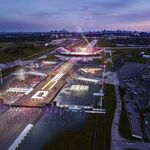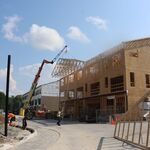bearcat
New Member
Member Bio
- Joined
- Jul 27, 2024
- Messages
- 67
- Reaction score
- 187
- Location
- Toronto (Entertainment District)
I think this is completely fine in lower density neighborhoods in Toronto or in the suburbs. Makes the most sense where the pedestrian volumes are low and will stay low as there is nowhere to walk as everything (grocery stores, restaurants) are far away, but may be close enough to easily cycle to.Another thing I would like to get cyclist's opinion on is the idea of converting sidewalks into multiuse paths. Oakville just converted a stretch of sidewalk on North service road between Fourth Line and Dorval Rd into a multiuse path. I'm not an avid cyclist but this feels like a half measure way to accommodate cyclists. Seems like groups of pedestrians who take up the entire width of the path would force cyclists to have to go onto the grass.
North Service Road Multi-Use Path - Fourth Line to Dorval Drive
www.oakville.ca
They finished the project a couple weeks ago, and I took a photo of the path this morning. North Service Rd & Lindsay Dr.
View attachment 597096
Also notice that work on Speers Rd from Dorval to Kerr St. has begun. They're preparing to move the hydro poles further back from the road. I'm assuming the separated bike paths on the western portion of Speers will be extended all the way to Kerr St from Dorval.




